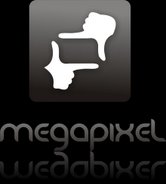Palettes for digital photos: RGB, CMYK, and HSV - new
 Imagine drawing a picture using only dots. If you look very closely at a digital photo, you will see that this is exactly the case; the image is made up of millions of tiny pixels. Each pixel has just the right color and intensity to create the desired image when combined with all the other pixels. This is true of any digital picture, whether it be on your computer screen or printed on paper.
Imagine drawing a picture using only dots. If you look very closely at a digital photo, you will see that this is exactly the case; the image is made up of millions of tiny pixels. Each pixel has just the right color and intensity to create the desired image when combined with all the other pixels. This is true of any digital picture, whether it be on your computer screen or printed on paper.
To get the right color, a pixel uses a combination of three or four base colors. Thousands of colors can be produced by combining these colors in different ways. The configurations discussed here are the most common choices for the base colors.
Red, Green, and Blue (or RGB) is the most commonly used color format because it is based on the primary colors you learned in grade school. (You may have had yellow in your first-grade crayon box, but green is actually the third primary color.) RGB colors are sufficiently different from each other that any other color can be made by mixing them. Computer screens often use the RGB format; each pixel emits a combination of red, green, and blue light. RGB is therefore an “active format,” or a color scheme created by mixing light.
Cyan, Magenta, Yellow, and Key (or CMYK) is another common color configuration. Instead of the primary colors (RGB), the complementary colors (cyan, yellow, and magenta) are used. Again, these colors are different enough that they can be combined into any other color. The most difficult color to make by combining other colors is black. For this reason, CMYK pixels also have a black component known as the “key” (the ‘K’ in CMYK). Most printed work uses the CMYK format, accounting for the cyan, magenta, yellow, and black cartridges in your computer printer. Instead of producing light, the images are formed by mixing ink. For this reason CMYK is known as a “passive format” instead of an active one.
Hue, Saturation, and Value (or HSV) works differently from the other configurations. In this format, each color is described by its hue, saturation, and value. Hue specifies the color of a pixel, while saturation determines the shade of that color. For example, a color with low saturation appears light and faded, while a pure, distinct color has a high saturation. The brightness of the color is determined by the value, or intensity. A very bright color has a high value, while a dim color has a low value. These qualities are independent; any hue can take on several different saturations and values.
The HSV format is very commonly used in photo editing software, mostly because it describes colors using the same descriptors a human would use. Here’s an article on Photoshop for beginners. It is much easier for a person to choose a color using its color, shade, and brightness (HSV) than by specifying the percentages of red, green, and blue (RBG) or yellow, cyan, and magenta (CMYK).
While RGB is by far the most popular choice for digital images, it should be noted that any color can be described in any of these formats. Each color is represented by percentages of the base colors, and can be mathematically converted from one color system to another. As you have seen, some formats are particularly suited for certain applications. Conversion between these systems allows the image you have edited with HSV software on your RGB computer screen to be printed on your CMYK printer!
You can also gain more technical photography knowledge from Digital Photography Secrets. They’ll probably ask you to sign up, that’s OK though because you can unsubscribe straight away if you’re not happy. Moreover, it is full of researched and valuable information - I think you’ll be pleased. I know the owner and he’s a straight up person.SOURCE


1 comment:
Excellent article.
Find top digital cameras at Megacameras.com
Post a Comment